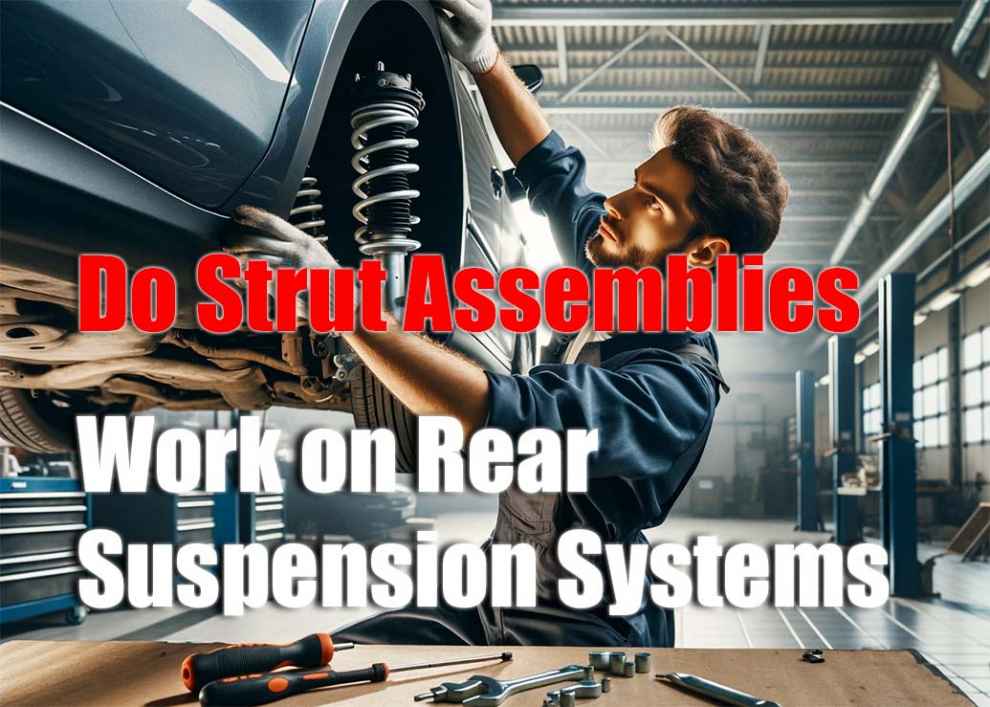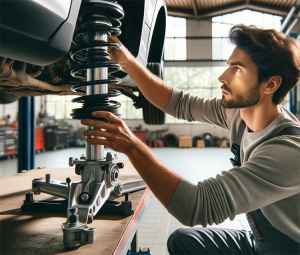The incorporation of strut assemblies in the rear suspension of vehicles marks a significant evolution in automotive design, aiming to enhance the balance between comfort and performance. While front strut assemblies are commonly recognized for their direct impact on steering and overall stability, the role of rear strut assemblies is equally vital, albeit less discussed. This guide delves into the nuanced functionality of rear strut assemblies, shedding light on how they support the vehicle’s weight, absorb road imperfections, and contribute to a refined driving experience. Understanding the mechanics behind rear strut assemblies is crucial for vehicle owners looking to maintain or upgrade their suspension system for optimum performance.
Understanding Strut Assemblies
Strut assemblies serve as the backbone of modern suspension systems, ingeniously combining a coil spring and shock absorber into a single, efficient unit. This integration allows for a compact, robust design that supports the vehicle’s structural integrity while offering the flexibility needed to absorb and dampen road shocks. In the context of rear suspension, strut assemblies play a pivotal role in managing the vehicle’s dynamic response to varying road surfaces, enhancing both safety and comfort. Their contribution extends beyond mere shock absorption, affecting everything from load handling to the reduction of body roll during cornering.
The Mechanics of Rear Strut Assemblies
The function of rear strut assemblies within the suspension system is multifaceted. They are engineered to offer vertical support, control lateral movement, and maintain optimal alignment of the wheels. This is particularly important in independent rear suspension setups, where the freedom of movement for each wheel demands precise control to maximize traction and stability. The design and operation of rear strut assemblies are crucial in ensuring the vehicle remains level and responsive, regardless of the driving conditions.
-
Damping Road Irregularities: They absorb shocks from road imperfections, delivering a smoother ride.
-
Supporting Vehicle Weight: Struts bear a significant portion of the vehicle’s weight, affecting ride height and stability.
-
Maintaining Wheel Alignment: Properly functioning struts are vital for keeping the wheels aligned, reducing tire wear, and improving handling.
-
Enhancing Safety and Comfort: By stabilizing the vehicle’s motion, struts contribute to safer handling and a more comfortable driving experience.
Benefits of Rear Strut Assemblies
Incorporating rear strut assemblies into a vehicle’s suspension design brings forth a spectrum of benefits. Notably, they enhance the vehicle’s handling, making it more agile and responsive to driver inputs. This is particularly beneficial in emergency maneuvers, where vehicle stability can be the difference between safety and peril. Furthermore, the improved ride quality offered by effective rear struts significantly elevates the driving experience, reducing fatigue over long distances and ensuring passengers enjoy a comfortable journey. Moreover, the longevity of suspension components and tires is markedly improved, thanks to the even distribution of stress and wear facilitated by the struts.
Installation and Maintenance
Proper installation and maintenance of rear strut assemblies are imperative for harnessing their full potential. While the installation process might vary slightly based on the vehicle model, it generally involves:
- Safely lifting the vehicle and removing the rear wheel.
- Detaching the old strut assembly from its mounting points.
- Positioning and securing the new strut assembly.
- Repeating the process on the opposite side for balanced performance.
Regular inspections are crucial to identify signs of wear or damage early on. Maintenance checks should focus on the strut assembly’s physical condition, looking for leaks, corrosion, or deformation. Ensuring timely replacements and adhering to maintenance schedules can significantly extend the service life of rear strut assemblies.
For those looking to enhance their vehicle’s suspension system, particularly Jeep owners, the selection of the Best Shocks for Jeep XJ can markedly improve off-road capability and on-road comfort. Our dedicated article provides valuable insights for making an informed decision.
Conclusion
Rear strut assemblies are indispensable components that significantly contribute to a vehicle’s performance, safety, and comfort. Their role in the suspension system is critical, offering improved handling, stability, and ride quality. Vehicle owners and enthusiasts should understand the importance of maintaining these components in top condition to enjoy a superior driving experience. Whether it’s routine maintenance or an upgrade to high-performance parts, attention to the rear strut assembly ensures your vehicle remains reliable, safe, and enjoyable to drive.

 Damping Road Irregularities: They absorb shocks from road imperfections, delivering a smoother ride.
Damping Road Irregularities: They absorb shocks from road imperfections, delivering a smoother ride.
Add Comment